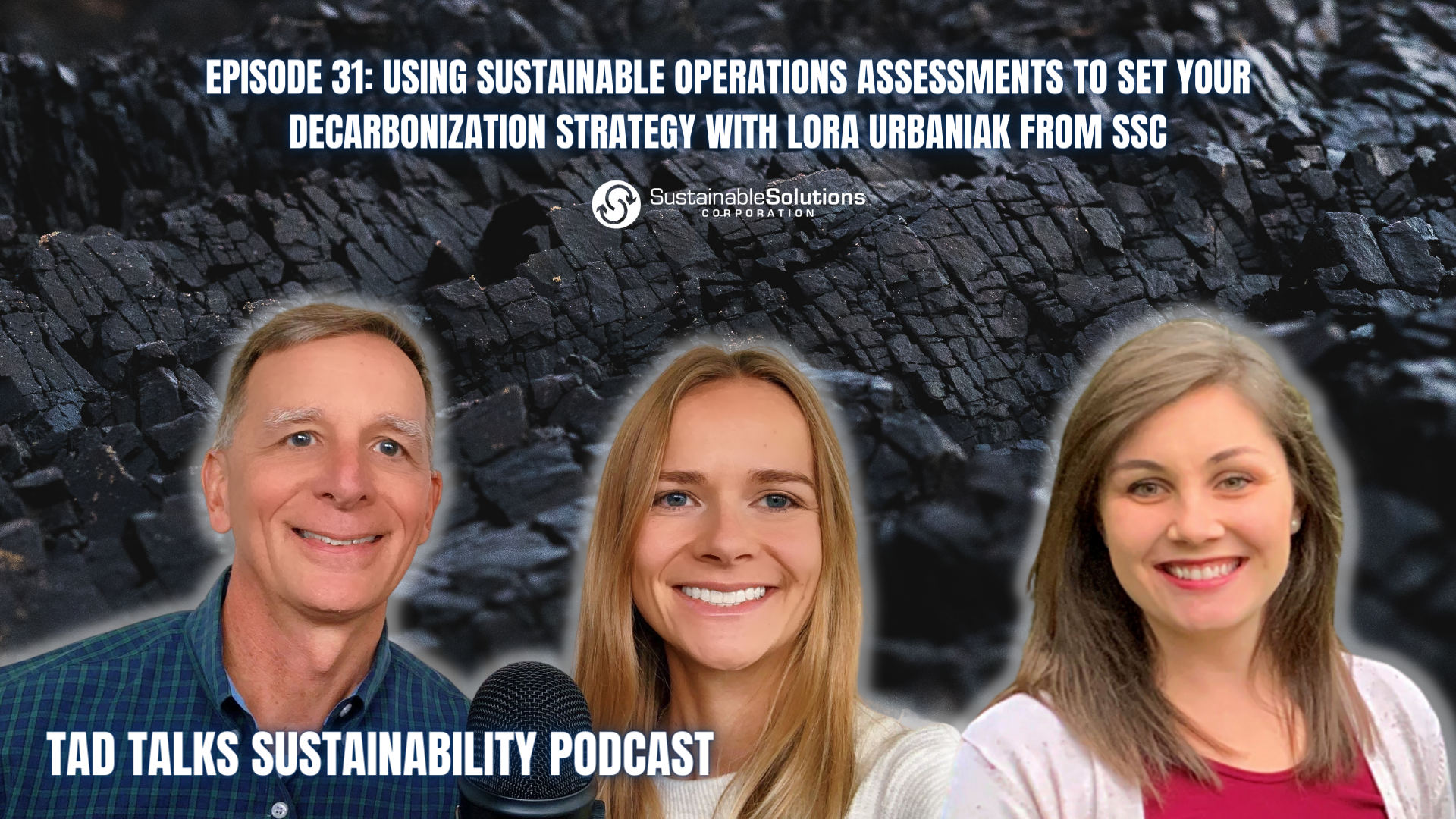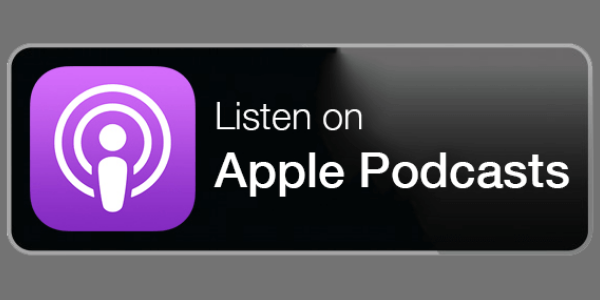Episode 31: Using Sustainable Operations Assessments to Set Your Decarbonization Strategy with Lora Urbaniak from SSC
Click the links below to listen to the full episode
Setting a decarbonization strategy requires an understanding of your operations. Sustainable Solutions Corporation (SSC) conducts Sustainable Operations Assessments (SOA) to help companies understand how to reduce their energy, water and waste. In this episode, Tad and Julianna sit down with Lora Urbaniak, Senior Project Manager at SSC, to discuss what an SOA is, how SSC uses SOA to help companies set their decarbonization strategy, the cost savings and benefits of an SOA, areas where SSC usually finds the biggest potential for dollar savings, and how SOA can help a company meet their sustainability goals or science-based targets.
Interested in submitting a question for Tad to answer on an upcoming episode? Type your question into the box at the bottom of the page!
What is a Sustainable Operations Assessment (SOA)?
“This is one of our core services at Sustainable Solutions. We really want to help companies look at their energy, water, and waste impacts to see how they can reduce those. We will work with a company to first start with a benchmark and baseline of where their operations are. Whether that's one facility, the entire company, or somewhere in between. We do a lot of data collection to make sure we really understand what utilities they are already using, what waste they are generating, what their raw material purchases are, their water impacts, etc... From there, we do an initial carbon footprint of their operation set in a baseline year. So that really gives us and our clients an understanding of where they already are and some of those initial opportunities. We try to work with our clients to really understand a lot of that facility. The key part is doing an onsite assessment. Here at Sustainable Solutions, we are really hands-on, so we will come to a site for a few days and really dive into the operation. We walk through with key plant personnel to discuss where the utilities are being used, what their most significant resource users are, where the materials are being used, from the start of coming in the door to when products are being shipped out and where is waste generated from that. We try to become mini experts on the process so we can really understand what's going on.
If we're doing a waste characterization, we will pull out trash and really dive into it to understand what wastes are going into your waste streams and start to identify those opportunities where you can reduce those. The onsite assessment is a really key part and then we come back and we do a deep dive into what we learned from the data, the onsite assessment, and the biggest opportunities for a company to reduce energy, water, and waste. We will put together a final report out that identifies opportunities, not only energy, water, or waste reductions, but also the cost and the emissions implications so a company can really understand from that low hanging fruit to some of those higher capital investments what their opportunities are to be more sustainable.”
Can you tell us how you use that information then to help a company set their overall decarbonization strategy and what that would mean?
“At Sustainable Solutions, we believe that you really need to understand your operations in order to set a decarbonization strategy. It's both a top down and bottoms up approach. You need to understand what's important to the corporation and the market to be able to set goals. We also believe that you need to really understand what your opportunities are and what is achievable in order to walk up to what those goals in that strategy should be. We do the initial benchmark of scope one, scope two, and sometimes we'll get into scope 3, to help our clients understand what their impacts are in that baseline year and then we really take those opportunities to help them understand what their potential reduction is. So when we work with companies on a decarbonization strategy or goal setting, we can really understand, “Okay, at this site we saw ‘x’ percent reduction in your energy use that results to this carbon footprint reduction, let's put a timeline on those to understand what is achievable in the next five, ten, fifteen years to get that decarbonization strategy in place.”
What do you typically see in terms of cost savings for some of the clients that you work with?
“It can really vary based on their operations, but we generally see pretty big cost saving opportunities. Especially if we look at that total payback of the no cost low hanging fruit. We’re often seeing a lot of cost savings from just turning off equipment, those smaller behavioral changes that can really cost the company nothing to implement can really add up in cost savings. Maybe it takes a capital investment, but that long term plan really drives down the cost. So we really see a lot of potential reduction in costs from electricity reduction, natural gas reduction, and then also on the other end a lot of companies have these sustainability targets so at some point they may be looking at buying renewable energy credits or carbon offsets. That cost also adds up. If you can reduce demand on the front end, you're also reducing that potential impact down the line. We see hundreds of thousands of dollars in reduced impact, depending on the client, especially when we look at potential renewable energy added in as well.”
ABOUT Lora Urbaniak
Lora is a Senior Project Manager at SSC. Lora has experience working on Sustainable Operations Assessments, Waste Diversion Assessments, LEED certifications, and sustainability strategies for clients. Lora graduated from Lafayette College with a Bachelor of Science degree in Chemical and Biomolecular Engineering and received a Master of Science degree in Sustainable Engineering from Villanova University.
WE’RE ANSWERING QUESTIONS FROM OUR AUDIENCE!
Anonymously ask Tad a question about sustainability by typing your question in the box below.
We will answer your questions on an upcoming episode.






